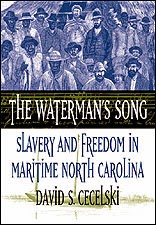 Here are some more
books to which we will turn in the
new graduate course "Gender, Race and the Urban Space." The students and I will read lots of thick excerpts this time around as I partly want to help them see the abundance of literature in the growing field of urban history, but also help them see the many ways of studying "city," "gender"
and "race" as categories of analyses separately
and collectively.
Here are some more
books to which we will turn in the
new graduate course "Gender, Race and the Urban Space." The students and I will read lots of thick excerpts this time around as I partly want to help them see the abundance of literature in the growing field of urban history, but also help them see the many ways of studying "city," "gender"
and "race" as categories of analyses separately
and collectively. Some of the titles are imagined works and others are historical monographs ranging from the colonial period to postwar America.
 We will even look for transnational correspondences between the
ways in which certain bodies are policed. For example, while bodies
marked "Other" on the basis of race, gender and sexuality are under
surveillance in the United States during the rising Jim Crow period at
the turn of the century, bodies some might deem similar are under
surveillance in Ponce, an urban space in Puerto Rico at the same time,
as Eileen Findlay Suarez' study of
Ponce reveals. Above all, we will be greatly interested in how the
urban space and particular bodies encounter one another.
We will even look for transnational correspondences between the
ways in which certain bodies are policed. For example, while bodies
marked "Other" on the basis of race, gender and sexuality are under
surveillance in the United States during the rising Jim Crow period at
the turn of the century, bodies some might deem similar are under
surveillance in Ponce, an urban space in Puerto Rico at the same time,
as Eileen Findlay Suarez' study of
Ponce reveals. Above all, we will be greatly interested in how the
urban space and particular bodies encounter one another.As I have talked to prospective graduate students, I have been impressed by their wide-ranging interests. Some of them plan to delve into the issue of gender and the urban space during the Civil War, for example. I am encouraged by these early conversations. Along the way, I wonder how much of my interest in this subject was sparked by my delight in reading Lynda Barry's The Good Times are Killing Me in my early 20s. I first discovered this book in Books & Books, an independent book chain in my native South Florida.
Some of my experiences as an elementary student at Biscayne Gardens Elementary in then-Miami-Dade county resonate against the narrative about an African American girl and white girl in late 1960s-early 1970s Seattle. At the time, I was one of several dozen African American students in then-northwest Dade County being bussed from our predominantly black community to then-predominantly white schools in North Miami. A good many of my classmates were white. Some were Jewish, but many were of Cuban and Puerto Rican descent, too. I do not recall knowing anyone from any other Caribbean country, although before and after World War II my own relatives arrived to South Florida not only from Mississippi and Georgia, but the Bahamas. Indeed, I spent the first five years of my life in the Coconut Grove community of Miami.
 As I have written earlier on this blog, I did not
know that the kids from my neighborhood in the then-northwest Dade community of Carol City (now the city of Miami Gardens) were integrating these North Miami schools. I just remember the white students and
teachers mostly being open to us being there. My first best friend who was not from my neighborhood wore the same Winnie the Pooh dresses I wore. She had blonde hair and blue-grey eyes. I can still see her waiting in front of the school for the yellow bus bringing the black children. I was one of those children.
As I have written earlier on this blog, I did not
know that the kids from my neighborhood in the then-northwest Dade community of Carol City (now the city of Miami Gardens) were integrating these North Miami schools. I just remember the white students and
teachers mostly being open to us being there. My first best friend who was not from my neighborhood wore the same Winnie the Pooh dresses I wore. She had blonde hair and blue-grey eyes. I can still see her waiting in front of the school for the yellow bus bringing the black children. I was one of those children.As I got closer to our sixth grade graduation, and moving on to a middle school closer to my neighborhood, I heard and saw things that made me think of racial differences more.
But first things first. Did someone say "Fall Break?'







